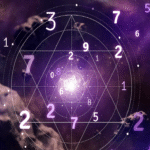Welcome to the Cosmic Map: The Path of the Warrior
Prepare for an energetic journey as we explore the domain of Mangal (also known as Kuja), the fiery planet Mars in Jyotish (Vedic Astrology). Often regarded as a ‘natural malefic’ (Papak Graha), Mangal is the force of action, courage, drive, conflict, and technical skill. This guide will navigate the Mars Sign Meaning (Mangal Rashi Meaning) within the Sidereal Zodiac, understanding its role in your Astrology Assertiveness Style, How You Take Action Astrology, Desire Nature Astrology, and its crucial function as Planetary Rulers Mars (Mangal ruling Mesha/Aries & Vrischika/Scorpio).
First Stop: The Traditional Foundations of Mangal (Kuja)
(The Traditional Jyotishi’s View)
Our journey begins with the classical understanding of Mangal as the commander-in-chief (Senapati) of the celestial army, the embodiment of energy (ojas), courage, strength, siblings (especially younger brothers), land/property (Bhoomi Karaka), logic, technical prowess, surgery, and conflict.
- Historical Context: Traditional Jyotish views Mangal as a source of immense power, capable of great construction or destruction depending on its placement and condition. Its strength (Bala) – assessed by Rashi (Uchcha/exalted in Capricorn, Neecha/debilitated in Cancer, Swakshetra in Aries/Scorpio), Bhava, aspects (Drishti) received, and combustion – determines its impact. A strong, well-placed Mangal grants courage, leadership, determination, and success in fields like military, engineering, or surgery.
- Classical Techniques:
- Kuja Dosha (Manglik Dosha): A highly significant condition where Mangal’s placement in certain Bhavas (typically 1st, 4th, 7th, 8th, 12th – definitions vary slightly by tradition) is said to cause potential difficulties or incompatibility in marriage. Its analysis requires careful consideration of cancellations and other chart factors.
- Special Drishti: Mangal casts powerful special aspects onto the 4th and 8th houses/signs from its position (in addition to the 7th), projecting its fiery energy onto those life areas.
- Traditional Interpretations: An afflicted Mangal (debilitated, conjunct/aspected by other malefics, in difficult houses) could indicate aggression, impatience, accidents, injuries, conflicts, property disputes, or issues with siblings. Its Bhava placement shows where energy and conflict are focused (e.g., Mangal in 3rd: courageous efforts; Mangal in 6th: defeating enemies/overcoming obstacles).
- Expert Insight (Traditional Source): “Mangal represents prowess, strength, courage, property, younger siblings, and the capacity for logical debate and warfare. Its nature is fiery and energetic.” – Paraphrased significations from classical texts.
- Hidden Wisdom: Ruchaka Yoga: One of the Pancha Mahapurusha Yogas, formed when Mangal is strong (exalted or own sign) in a Kendra (1st, 4th, 7th, 10th house). It bestows exceptional courage, leadership, physical strength, charisma, and success related to Mangal’s significations (e.g., military, property).
- Critical Considerations: Labeling Mangal simply as ‘malefic’ is incomplete. Its energy is essential for action and achieving goals. Kuja Dosha analysis is complex and often oversimplified, causing unnecessary fear; professional assessment is crucial.

Crossing the Bridge: Where Energy Meets Psychology
As we journey forward, the raw energy of Mangal is understood through a more nuanced psychological lens. Its drive is seen not just as physical force but as ambition, assertion, and the engine of desire. Conflict becomes not just external battle, but internal struggle and the drive to overcome limitations. The focus shifts from purely external events to the internal experience of Martian energy.
[VISUAL SUGGESTION: A symbolic bridge made of crackling fire or electrical energy, connecting traditional warrior symbols on one side with modern icons of motivation, goal-setting, and controlled power on the other.]
Second Stop: The Modern Interpretation Landscape
(The Modern Jyotishi’s Approach)
Here, Mangal is explored as the driving force behind our ambitions, How You Take Action Astrology, our Astrology Assertiveness Style, and the nature of our desires and passions.
- Contemporary Methods: Modern Jyotishis analyze Mangal’s Rashi (Sidereal) placement to understand the style of action and assertion – Mesha (Aries) Mangal is impulsive and pioneering; Karka (Cancer) Mangal is defensive and emotionally driven; Makara (Capricorn) Mangal (exalted) is strategic and disciplined. Bhava placement shows where this drive is channeled (e.g., 5th Bhava: competitive creativity; 11th Bhava: ambition within groups).
- Psychological Insights (Vedic Lens): Mangal represents the raw energy (Shakti) needed to pursue goals. Its condition reflects our relationship with anger, frustration, competition, and sexuality (Desire Nature Astrology). A well-placed Mangal indicates healthy assertion and drive. An afflicted Mangal might manifest as repressed anger, aggression issues, impatience, or burnout, suggesting areas needing conscious management.
- Evolving Interpretations: Kuja Dosha is often interpreted less as a fatal flaw and more as indicating potential challenges in marital adjustment related to energy levels, independence, or assertiveness styles, requiring conscious understanding and compromise between partners. Mangal’s role in technical fields is highlighted in the context of modern technology and engineering.
- Technique Deep Dive: Mangal’s Nakshatra Placement: Analyzing the specific Nakshatra occupied by Mangal reveals deeper layers of its motivation and expression (e.g., Mangal in Chitra Nakshatra might combine energy with aesthetic skill; Mangal in Dhanishtha might indicate ambition related to wealth or music).
- Expert Insight (Modern Jyotishi): “Mangal is your inner warrior and engine. Its placement shows how you fight for what you want, where your passion lies, and how you assert yourself in the world. Learning to channel this energy constructively is key.” – Contemporary Jyotish Practitioner.
- Alternative Approaches: Exploring Mangal’s connection to physical exercise, sports, and disciplines like martial arts as constructive outlets for its energy. Linking its technical signification to modern fields like coding or mechanics.

Third Stop: The Student’s Learning Curve
(The Student’s Journey)
Students must grasp Mangal’s dual nature – constructive energy versus potential conflict – and learn to assess its condition accurately. Understanding Kuja Dosha beyond fear-mongering is a crucial step.
- Learning Process: Students memorize Mangal’s significations (energy, courage, siblings, property, conflict), its rulerships (Aries/Scorpio), dignities (exalted in Capricorn, debilitated in Cancer), and its special Drishtis (4th, 8th). Differentiating Mangal’s action-oriented energy from Surya’s authoritative energy or Shani’s disciplined energy is important. Learning the rules for Kuja Dosha and its potential cancellations is a significant module.
- Common Questions: “Is having Mars debilitated (Neecha) really bad?” Answer: Neecha Mangal in Karka (Cancer) indicates challenges in asserting needs directly, potentially leading to passive-aggression or difficulty with sustained effort. However, it can also foster protective instincts. Strength comes from understanding and managing this tendency, and Neecha Bhanga can change the picture. “Do I definitely have Kuja Dosha if Mars is in one of those houses?” Answer: Not necessarily. There are numerous exceptions and cancellations (e.g., Mars in own sign, exalted, aspected by benefics, placement in certain signs within those houses). Proper assessment requires expertise.
- Breakthrough Moments: Understanding how Mangal’s Bhava placement explains one’s primary area of energy expenditure or conflict is often an ‘aha!’ moment. Correctly identifying Ruchaka Yoga or understanding the nuances of Kuja Dosha provides significant interpretive breakthroughs.
- Expert Insight (Jyotish Student): “Learning about my Mangal in the 6th house explained my drive to fight injustice and overcome challenges. It wasn’t just anger; it was focused energy directed towards service and problem-solving.”
- Misconceptions vs. Reality: Misconception: Mangal is always malefic and causes harm. Reality: Mangal provides essential energy, courage, and drive. Its effects become challenging only when afflicted or poorly placed, manifesting as aggression or conflict. Misconception: Kuja Dosha guarantees divorce or spouse’s death. Reality: This is a harmful exaggeration. It indicates potential energetic mismatches requiring awareness and adjustment, not a predetermined catastrophe. Getting the Mars Sign Meaning right involves seeing its essential power

Fourth Stop: The Realm of Practical Application
(The Practical Application Expert’s Guidance)
Here, we focus on harnessing Mangal’s energy constructively and mitigating its challenges.
- Real-World Usage: Mangal analysis guides career choices (military, police, engineering, surgery, sports, real estate), helps understand assertiveness patterns and anger management styles, informs property matters (as Bhoomi Karaka), and is crucial in marriage compatibility (Kuja Dosha check). Upayas are often suggested for afflicted Mangal.
- Client Experiences: Clients gain insight into their energy levels, competitive drive, and sources of conflict. Understanding their Astrology Assertiveness Style helps in personal and professional interactions. Proper Kuja Dosha assessment can alleviate unnecessary fears about marriage.
- Practical Tips:
- Identify your Mangal’s Rashi and Bhava to understand your style and focus of action.
- Channel Mangal’s energy constructively through physical activity, goal-setting, or advocating for causes.
- Practice conscious anger management techniques if Mangal is afflicted.
- If considering property purchase, assess the strength of Mangal in your chart.
- If Mangal is weak or afflicted, consider traditional Upayas like chanting Mangal mantras (e.g., Om Angarakaya Namah), worshipping Lord Hanuman or Kartikeya, or donating red items on Tuesdays, after proper consultation.
- Technique Deep Dive: Mangal’s Role in Medical Astrology: As significator for muscles, blood, bone marrow, accidents, burns, and surgery, Mangal’s condition is analyzed for potential health issues or recovery capacity in these areas.
- Expert Insight (Jyotish Consultant): “Mangal is pure energy. My goal is to help clients understand their unique Martian signature and direct that power towards achieving their goals courageously and effectively, rather than letting it manifest as frustration or conflict.”
- Step-by-Step Image Suggestion: Infographic: 1. Identify Mangal Rashi (e.g., Simha/Leo). 2. Note Action Style Keyword (e.g., Dramatic/Leading). 3. Constructive Outlet (e.g., Take leadership roles, engage in creative performance). 4. Caution Area (e.g., Avoid arrogance, manage ego in conflict).

Journey’s End: Your Personal Practice Path (Celestial Integration)
You have navigated the fiery terrain of Mangal (Kuja), from its traditional warrior roots and technical prowess to its psychological interpretation as drive and assertion, through the learning curves of Kuja Dosha, and into practical application for action and conflict resolution. Integrating these perspectives means respecting Mangal’s power (Traditional), understanding its psychological drive (Contemporary), mastering its specific rules (Student), and channeling its energy constructively (Practical). Mangal is the force that moves you forward; learn to wield your inner warrior with awareness, courage, and skill. Understanding your Mars Sign Meaning (Vedic) is key to harnessing your Desire Nature Astrology.
Map for Further Exploration (Further Learning)
- Guru (Jupiter) in Jyotish (Balancing energy with wisdom)
- Shani (Saturn) in Jyotish (Discipline tempering Mars’ impulsiveness)
- Bhavas (Houses) in Jyotish (esp. 1st, 3rd, 6th, 10th)
- Kuja Dosha (Manglik Dosha) In-Depth Analysis
- Ruchaka Yoga and other Mangal-related Yogas
- Bhoomi Karaka (Mars and Property Matters)









